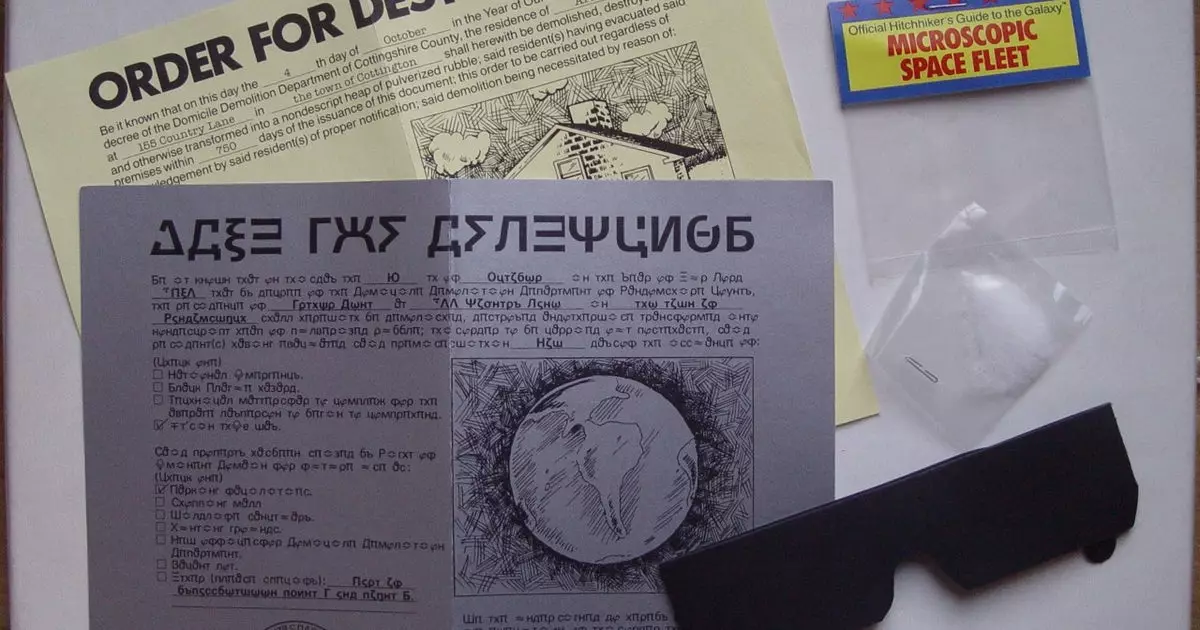In the world of video games, few companies have managed to carve out a legacy as fascinating and influential as Infocom. Founded in the early 1980s, Infocom was a pioneer in the realm of text-based adventure games, where players relied on their imagination and wit rather than intricate graphics. Interestingly, what set Infocom apart from its contemporaries wasn’t just the quality of their games, but the inclusion of unique physical artifacts, affectionately dubbed “feelies.” This concept not only enriched the gaming experience but also laid the groundwork for a culture of collectible items that resonates with today’s gamers.
The very essence of feelies can be captured through one particular title from 1984: The Hitchhiker’s Guide to the Galaxy. When you think about it, the idea of including physical objects alongside a game was revolutionary. It wasn’t merely about promotional items; it was an invitation to dive into the universe of the game in a tactile way. The “invisible” objects and quirky bits added layers to the psychological engagement players experienced. What better way to immerse yourself in a universe where absurdity reigns than by physically interacting with a bag that whimsically hints at what lies beyond the visible?
Redefining Characters: Arthur Dent, the Relatable Protagonist
Many gamers remember Arthur Dent, the reluctant hero of The Hitchhiker’s Guide, portrayed with a charming comic flair. It is fascinating how different interpretations can shift our perceptions of characters. In an insightful article by Victoria Regan, Arthur was described in a manner that transcended his anxious antics. Regan presents him as a stoic figure, grappling with existential crises while facing seemingly insurmountable odds. This characterization might initially seem overly dramatic, especially to those who grew up with Simon Jones’ portrayal on television—a portrayal filled with frantic energy and juvenile outbursts.
However, digging deeper into Arthur’s personality reveals a more profound struggle. He is not merely a victim of circumstances; rather, he embodies the human experience of navigating the absurdities of existence. Facing a bulldozer, as Regan notes, reveals a kind of bravery. For many, the mundane act of grappling with life’s chaos often feels far more heroic than traditional heroics. In a universe filled with unpredictable elements, Arthur’s attempts at maintaining his dignity resonate on a level that many can connect with. It makes you rethink what it means to be ‘heroic’ in a world where absurdity is the norm.
The Race Against Standardization: A Call for Personal Discovery
One can’t help but highlight an alarming trend—modern gaming has shifted towards an era dominated by instant gratification and meticulous publicity. Games are dissected, analyzed, and often spoilered long before they hit the shelves. In the chaotic noise of hype, the intrinsic joy of personal discovery risks being overshadowed. Regan’s reflection on her and her brother’s yearning to uncover hidden gems within Infocom’s games sheds light on a beautiful nostalgia. It’s not simply about defeating a pixelated enemy; it’s about the thrill of exploration, the excitement of secrets waiting to be discovered, and the euphoric feeling of accomplishment when overcoming an insurmountable challenge.
This discontent with the current state of gaming collectibles is valid—statues and elaborate limited editions may offer their charm but often fall short of the humble joy that feelies represent. The rise of the statue-dominated collector’s market seems almost sterile in comparison. Infocom’s feelies were modest and quirky, encouraging players to engage with them on their own terms rather than being swept away by mere consumerism.
The Beauty of Imperfection
As we celebrate these unique artifacts from the past, it’s essential to acknowledge the beauty of imperfection. The feelies thrive not on grandiosity but on their irony and charm, challenging players to appreciate subtleties often lost in today’s flashy collectibles. In an industry so bound by glossy aesthetics and marketability, an object that is purposefully described as “useless” becomes a statement in itself.
The intricate relationship we share with games, objects, and experiences deserves careful consideration. In a landscape overflowing with collectibles touting their significance, perhaps we should rejoice in the more delightful—the beautifully useless. By allowing ourselves to embrace the eccentricities of the gaming world, we invite authenticity and reconnect with the joy of exploration and discovery. As we continue to navigate the vibrant realm of gaming, let’s preserve and uphold the spirit of feelies—a reminder that in the grand narrative of existence, sometimes, inefficiency is the new efficiency.


Leave a Reply